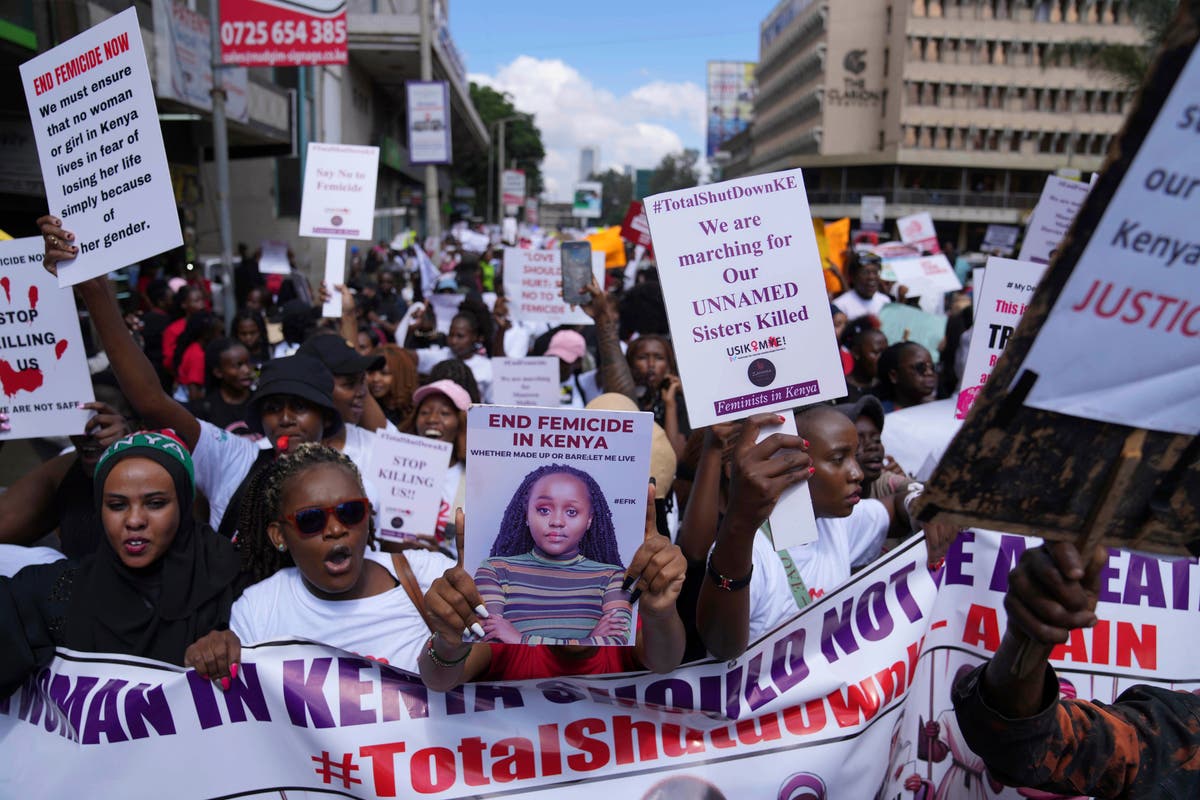Femicide: Understanding The Rise In Violence Against Women

Table of Contents
Defining Femicide and its Distinguishing Features
Femicide is the intentional killing of women because they are women. It's crucial to differentiate femicide from other forms of violence against women, such as domestic violence or general homicide. While overlapping, femicide specifically highlights the gendered nature of the violence and the underlying misogyny driving the act. The core element is the perpetrator's targeting of a woman due to her gender. This act is often rooted in power imbalances and deeply ingrained patriarchal structures.
- Intentional Targeting: Femicide involves the deliberate selection of a woman as a victim because of her gender.
- Underreporting: A significant challenge in addressing femicide is the widespread underreporting of cases. Many killings are misclassified as suicides, accidents, or domestic disputes.
- Patriarchal Structures: Deeply entrenched patriarchal norms and power dynamics often contribute to the acceptance or normalization of violence against women, ultimately leading to femicide.
The Rise in Femicide Rates: Global Statistics and Trends
Global statistics on femicide paint a grim picture. Reports from organizations like UN Women and the WHO reveal a disturbingly high number of women killed annually due to gender-based violence. While precise figures vary due to underreporting and differing methodologies, the overall trend is alarming. Certain regions and countries consistently exhibit significantly higher femicide rates than others.
- High-Rate Countries: Specific countries in Latin America, parts of Africa, and some regions of Asia consistently report extremely high rates of femicide.
- Demographic Variations: Femicide affects women across all socioeconomic backgrounds and age groups, although certain demographics may be disproportionately vulnerable.
- Data Limitations: Accurate data collection on femicide remains a major challenge, hindering effective response and policy development. Inconsistencies in definitions and reporting mechanisms across nations further complicate the issue.
Underlying Causes and Contributing Factors of Femicide
Femicide is a complex issue with interconnected societal factors driving its prevalence. It's not a single cause but a confluence of deeply embedded issues. Gender inequality forms the foundation, creating environments where violence against women is normalized or even condoned.
- Harmful Masculinity: Rigid gender roles and harmful ideas of masculinity contribute significantly. The belief that men are entitled to control women fuels violence.
- Social Acceptance: Societal acceptance, or at least a lack of condemnation, of violence against women plays a critical role. This can manifest as minimizing abuse or blaming victims.
- Lack of Resources: Limited access to resources, including legal aid, shelters, and support systems for victims, further exacerbates the problem. Poverty and conflict often intensify the risk.
Prevention and Intervention Strategies to Combat Femicide
Addressing femicide requires a multi-pronged approach focusing on prevention and intervention strategies. This involves tackling the root causes of gender-based violence while simultaneously improving responses to existing cases.
- Education and Awareness: Comprehensive education programs are crucial to challenge harmful gender norms and promote respect for women's rights.
- Legislation and Enforcement: Stronger legislation criminalizing femicide and violence against women is essential, coupled with robust law enforcement and judicial systems.
- Support Services: Providing comprehensive support services for survivors and their families is vital for healing and preventing further violence. This includes shelters, counseling, and legal assistance.
- Successful Programs: Many successful programs around the world demonstrate the effectiveness of community-based interventions, targeted educational campaigns, and strengthened legal frameworks.
Conclusion
Femicide is a devastating global issue rooted in deep-seated gender inequality and patriarchal structures. Addressing this crisis requires a multi-pronged, coordinated approach encompassing education, legislation, law enforcement reform, and comprehensive support services for survivors. It demands a collective commitment to challenge harmful societal norms and create a world where women's safety and rights are paramount. Understanding the complexities of femicide is the crucial first step towards its eradication. Let's all work together to raise awareness about femicide, advocate for stronger protective measures, and build a future free from gender-based violence. Join the movement to end femicide today, and learn more about femicide prevention and how you can contribute to the fight against gender-based violence.

Featured Posts
-
 Half Domes Expertise Lands Abn Group Victoria Contract
May 21, 2025
Half Domes Expertise Lands Abn Group Victoria Contract
May 21, 2025 -
 Female Pub Landlords Angry Tirade Raw Footage Of Staff Members Notice Reaction
May 21, 2025
Female Pub Landlords Angry Tirade Raw Footage Of Staff Members Notice Reaction
May 21, 2025 -
 The Allure Of Cassis Blackcurrant Liqueurs
May 21, 2025
The Allure Of Cassis Blackcurrant Liqueurs
May 21, 2025 -
 Abn Amro Florius En Moneyou Benoemen Karin Polman Tot Directeur Hypotheken
May 21, 2025
Abn Amro Florius En Moneyou Benoemen Karin Polman Tot Directeur Hypotheken
May 21, 2025 -
 Get Ready For Spring Streaming Jellystone And Pinata Smashling On Teletoon
May 21, 2025
Get Ready For Spring Streaming Jellystone And Pinata Smashling On Teletoon
May 21, 2025
Latest Posts
-
 Fremantles Q1 Revenue A 5 6 Drop Due To Reduced Buyer Spending
May 21, 2025
Fremantles Q1 Revenue A 5 6 Drop Due To Reduced Buyer Spending
May 21, 2025 -
 Uefa Nations League Germany Advances Past Italy With 5 4 Aggregate Win
May 21, 2025
Uefa Nations League Germany Advances Past Italy With 5 4 Aggregate Win
May 21, 2025 -
 Beiers Two Goals Secure Borussia Dortmund Win Over Mainz
May 21, 2025
Beiers Two Goals Secure Borussia Dortmund Win Over Mainz
May 21, 2025 -
 Germanys 5 4 Aggregate Victory Sends Them To Uefa Nations League Final Four
May 21, 2025
Germanys 5 4 Aggregate Victory Sends Them To Uefa Nations League Final Four
May 21, 2025 -
 Borussia Dortmunds Victory Fueled By Beiers Double Against Mainz
May 21, 2025
Borussia Dortmunds Victory Fueled By Beiers Double Against Mainz
May 21, 2025
